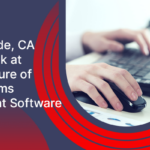How Claim Management Companies Can Enhance Their Practices
October 18, 2024
In today’s fast-paced world of technology, the insurance industry is on the brink of a major shift: the rise of claims processing software. As insurers adapt to the digital age, keeping up with the latest trends is crucial. Claims processing is becoming more efficient with advanced claims software solutions. These tools make operations smoother, improve accuracy, and focus more on customer needs. With tools like AI, data analytics, and automation, insurers have more power than ever before. This blog explores how these modern solutions are transforming the insurance industry, making processes smoother, improving customer satisfaction, and reducing risks. Join us as we explore the exciting future of claims management, full of promise and potential.
Evolution of Claims Software
Claims processing has drastically improved due to technology. The days of labor-intensive manual processes and error-prone paperwork have been replaced by sophisticated software. Artificial Intelligence (AI), Machine Learning (ML), Robotic Process Automation (RPA), and Big Data analytics have made fraud detection more accurate, processes more automated, and claim settlements quicker. This cutting-edge software guarantees a better customer experience while increasing efficiency and reducing costs.
Key Industry Trends
AI and Machine Learning
AI and ML algorithms are revolutionizing claims processing by analyzing vast datasets to identify patterns, detect fraud, and forecast claim outcomes with precision. These technologies empower insurers to expedite claims handling while minimizing risks and enhancing decision-making.
Data Analytics
Big Data analytics helps insurers gather insights from various data sources. They analyze past trends, customer actions, and market changes to improve claim processes, tailor services, and reduce risks.
Automation
Robotic Process Automation (RPA) has emerged as a pivotal tool in claims processing. RPA bots reduce human error and increase operational efficiency by automating repetitive processes like data input, document verification, and claims validation
Customer-Centric Solutions
These days, claims software is customer-focused, by providing self-service portals, mobile apps, and other channels for communication. This makes it simple for policyholders to file claims, follow them in real-time, and receive individualized assistance along the route.
Integration with IoT Devices
The rise of IoT lets insurers collect real-time data from devices like telematics and wearables. IoT data helps insurers to understand risks better, prevent losses, and offer proactive solutions to policyholders.
Blockchain Technology
Blockchain is reshaping claims management by offering a secure platform for storing and sharing claim data. It removes intermediaries, strengthens data integrity, speeds up settlements, and reduces fraud risks.
Cloud-based solutions
Cloud-based claims processing software offers several advantages over traditional on-premise options. Cloud-based solutions are more scalable, easier to maintain, and accessible from anywhere with an internet connection. This makes it easier for insurers to collaborate with third-party administrators (TPAs) and other stakeholders involved in the claims process.
Benefits of Adopting Claims Software
- Improved Efficiency: Claims software makes processing faster by automating tasks and reducing manual work, leading to quicker turnaround times.
- Enhanced Accuracy: AI algorithms and data analytics improve decision-making accuracy, reduce errors, and ensure fair claim settlements based on objective criteria.
- Cost Savings: Claims software helps insurers save operating expenses by automating tasks, reducing fraud losses, and using resources more wisely.
- Enhanced Customer Experience: Self-service portals, mobile apps, and real-time communication let policyholders easily file claims, track them, and get quick help, increasing satisfaction.
- Fraud Detection and Prevention: Advanced analytics and AI algorithms enable insurers to identify fraudulent claims promptly, thus minimizing losses and preserving the integrity of insurance portfolios.
- Compliance and Risk Management: Claims software ensures compliance with regulatory standards and internal protocols while mitigating risks associated with fraudulent activities, data breaches, and non-compliance issues.
Conclusion
Claims processing software has changed significantly. For insurers, these developments mean significant benefits like lower operating costs, more accuracy, and quicker claim processing times. Adopting these trends gives insurers the ability to use strong technologies for workflow optimization, especially those related to artificial intelligence and big data analysis. Keeping up with the most recent developments is essential to preserving a competitive advantage and providing customer-focused service. Transform your claims processing with Datagenix’s innovative software solutions. Streamline operations, enhance efficiency, and optimize your workflow. Contact us today.
7 Features Every Online Claim Management System Needs
June 27, 2024What to Look for in Claims Management Software?
May 8, 2024









